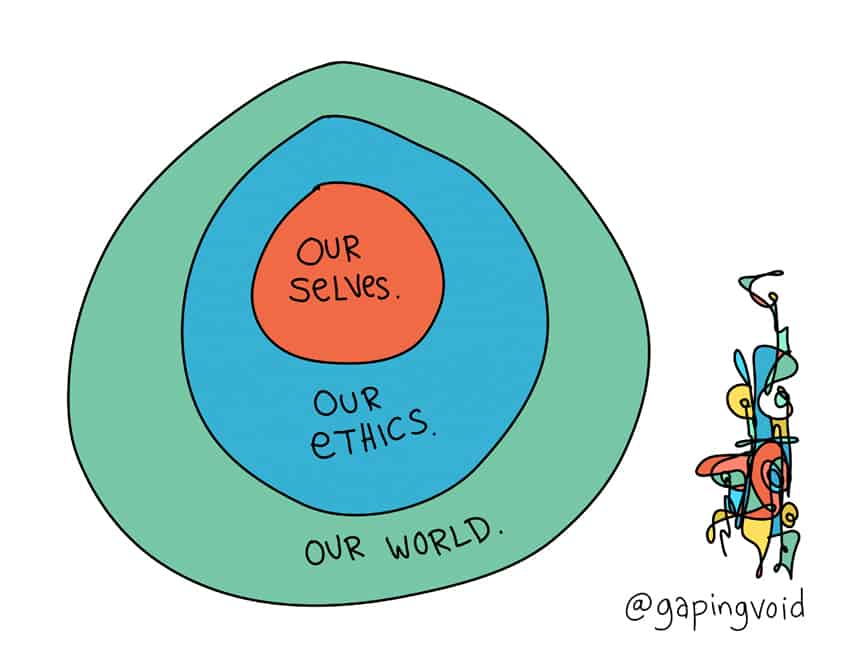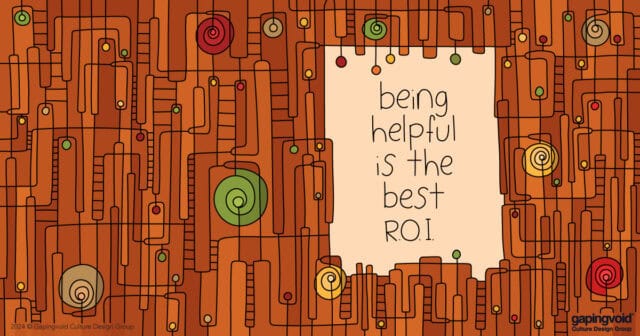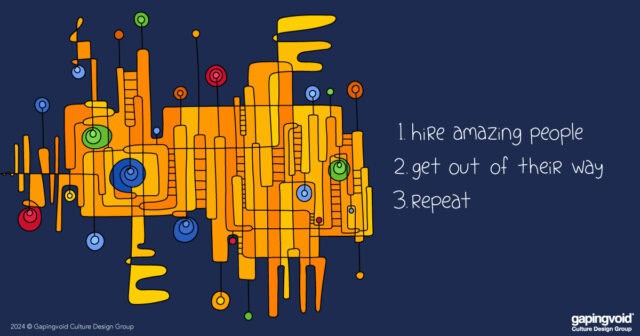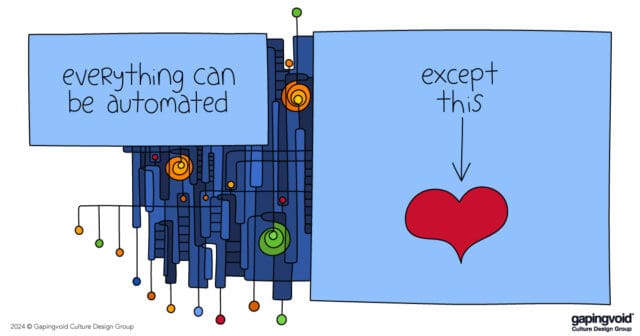Sreedhari Desai has published some really compelling work on how certain messages and objects at work influence behavior, including such issues as morality. Sreedhari’s work has been published in dozens of publications including HBR, WSJ, Forbes, FT, etc. We are partnering with Sreedhari on studies that address how “Gapingvoid Creative Installations” impact the workplace at companies such as Microsoft and Zappos.
A few words from Sreedhari:
I recently gave a talk at Google’s re:Work conference where one of the things I highlighted was the importance of recreating childhood and play at work. Lamentably, workplaces are often overly sterile and impart rigidity. My research shows that having colorful furniture, child‐art, or a sense of play at work can reduce anxiety and also cause people to be ethical.
Given the importance of practicing what you preach, for this talk, I chose to work with Gapingvoid to create my slides. Gapingvoid’s art succeeds where typical office/institutional art fails. What makes their work so effective is that the illustrations, though accompanied with sophisticated work‐related messages, have a child‐like curiosity, wonder, and innocence about them, which all at once, opens people up and feeds them a really useful insight. So, I thought it would be perfect for my talk! Conference attendees loved the illustrations and the simple yet profound truths they revealed, on top of their disarming innocent style.
Sreedhari D. Desai ▪ Assistant Professor, Organizational Behavior ▪ Kenan-Flagler Business School




